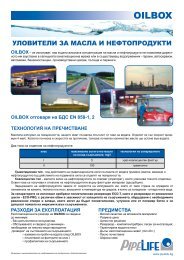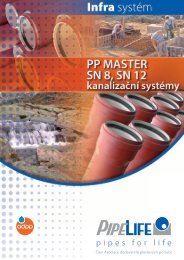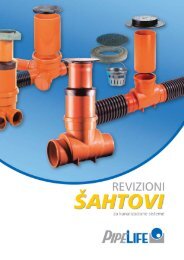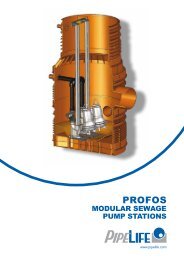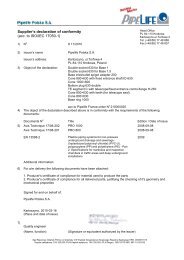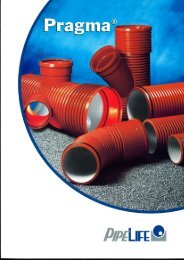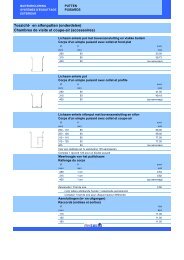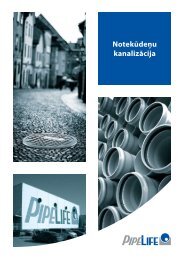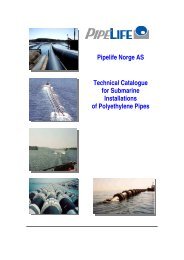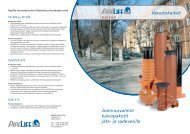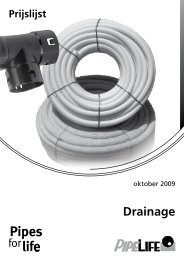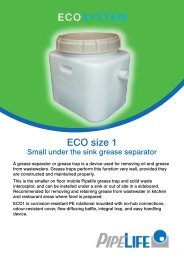You also want an ePaper? Increase the reach of your titles
YUMPU automatically turns print PDFs into web optimized ePapers that Google loves.
For k = 0.40 [mm], water temperature t = 10°C, full profile<br />
Darcy-Weisbach/Colebrook-White Formula<br />
Quantity<br />
velocity<br />
hydraulic slope<br />
<strong>Pragma</strong> diameter [mm]<br />
9.5 Slopes and velocities of flow in PRAGMA ® <strong>pipes</strong> slopes<br />
The slope of the channel must also be<br />
considered as variable, since it is not<br />
necessarily completely defined by topo<br />
graphic conditions.<br />
The minimum channel slope is required<br />
to achieve the lowest flow velocity which<br />
will prevent suspended solids from settling<br />
out and clogging the pipe.<br />
In general, solid particles, e.g. sand particles,<br />
can deposit on the bottom to a<br />
depth corresponding to the particle friction<br />
angle (see Figure 9.1), expressed as<br />
where:<br />
hn – depth of flow, [m]<br />
d – inside pipe diameter, [m]<br />
Θ - internal friction angle, [°]<br />
If Θ = 35°<br />
then hn/d = 0,1<br />
The area of deposition may be allowed to<br />
a relatively flat zone of the channel bottom.<br />
Figure 9.1.<br />
Angle of friction<br />
The safe lower limit of velocity to avoid<br />
sedimentation depends on the type of<br />
sediments. Usually, the permissible minimum<br />
velocities (V sc ) which ensure selfcleaning<br />
of the channel should not be, at<br />
full flow, lower than:<br />
V sc = 0,8 m/s for sanitary sewers<br />
V sc = 0,6 m/s for storm sewers<br />
V sc = 1,0 m/s for combined sewers<br />
Pipelife<br />
www.pipelife.com<br />
24



